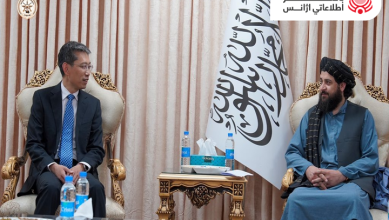
Wednesday June 22, 2016
Kabul (BNA) Construction of dams enjoys a special strategic place in stable and balance development of Afghanistan.
Because, Afghanistan is an agricultural country and management of waters can provide all farmlands with sufficient waters that will create a special change in relevant sector of the country. Providing water for agriculture sector can also grow economy of the country—a move that is directly related to pave the way for job opportunities. In fact, if Afghanistan’s water resources are properly used, the country has the capacity of 23,000MW power, and if it is implemented, power will be ensured with cheaper prices and the country’s dependency to neighboring countries would be diminished. An official of the ministry for energy and water, Azimi said, using domestic resources will make Afghanistan self-reliant and it would soon change to an energy exporter in the region.
The ministry has 5-year plans to construct the dams of the country with the help of private sector and donor countries, Azimi further said. Mentioning Salma and Darounta dams in Herat and Jalalabad, Azimi said these great dams could bring considerable changes and have caused to grow the people economy in the provinces. Furthermore, the ministry called on construction of 29 other dams and the procurement works of them has already begun. The government of national unity is committed to attract the foreign aids to construct the dams, Azimi went on to say, adding the dams’ construction will take three to five years to utilize. Currently, 70 to 75 percent of Afghanistan’s power is importing and its remaining 25 percent is provided through domestic resources.
The ministry of energy and water is making effort to make the country reach self-sufficiency through its 5-year plans, Azimi continued. Afghanistan is located between Middle and South Asia and is a linkage bridge between north and south. Tajikistan, Uzbekistan, Turkmenistan and Kyrgyzstan are the rich of energy resources countries and are exporting their power to Pakistan and India through which Afghanistan will receive transit fee.
For instance, the Central Asia-South Asia power project, commonly known by the acronym CASA-1000, is a $1.16 billion project currently under construction that will allow for the export of surplus hydroelectricity from Tajikistan and Kyrgyzstan to Afghanistan and Pakistan. Groundbreaking of the project took place on May 12, 2016 in Tajikistan in a ceremony attended by the Kyrgyz, Tajik and Pakistani Prime Ministers, and is expected to be wrapped up by the end of 2018. Likewise, TUTAP is a project through which Afghanistan and south Asia countries, particularly, India and Pakistan will benefit of it. On construction of dams, Azimi said they will cost $100 to $500 million and will take time.
Shukria Kohistani




